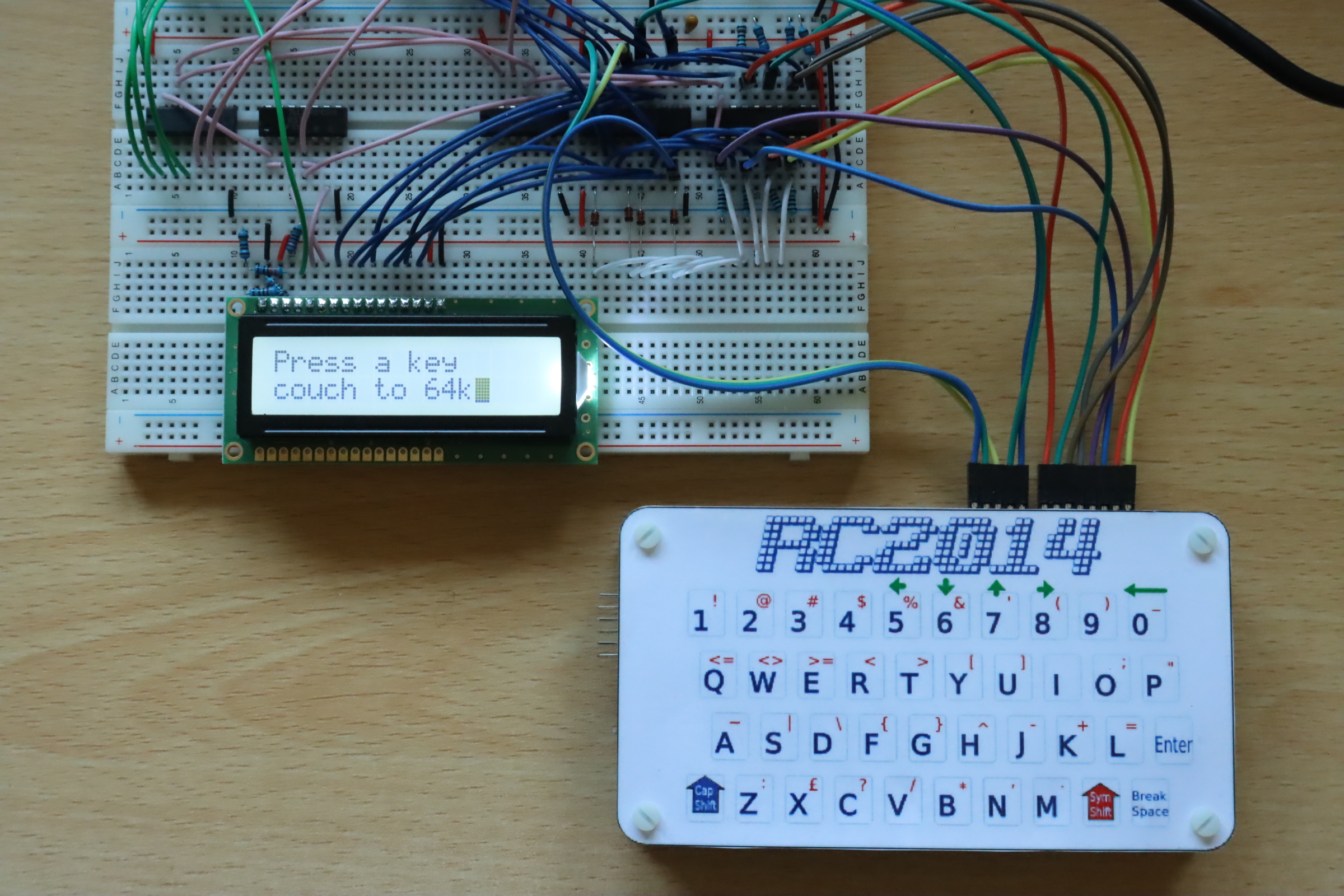Understanding the Amstrad CPC Video, RAM and Gate Array Subsystem
The Amstrad CPC is my favourite 8-bit home computer system – I still have my childhood CPC464. There are a number of things I love about it’s design, including the video system, which offers higher resolution and a larger colour palette than most of it’s siblings. Recently I’ve put some effort into understanding how the …. Read More
Couch to 64k Part 5: Adding RAM and a CP/M Compatible Memory Architecture to the Z80 Breadboard Computer
If you’ve been following this series so far then you’ll have a basic Z80 based computer with ROM, an LCD display and a keypad or keyboard. What we don’t have yet is any way store store data. We need to add some RAM (Random Access Memory). This is what I’ll be focusing on in this …. Read More
Couch To 64k Part 4: Adding a Keypad/Keyboard to our Z80 Breadboard Computer
In the previous part of this series we added a character LCD display to our breadboard computer. We discussed how input, output and address decoding works on the Z80, which means we know most of what we need to know to be able to add an input device. In this part we’ll be adding some …. Read More
Couch to 64k Part 3: Adding a Character LCD Display to our Z80 Breadboard Computer
In the previous part of this series we attached a ROM chip to our Z80 so we can run programs. But running programs is of little use unless our computer has some way to communicate with the outside world. We need input and output (I/O). In this part we’ll discuss how input and output work …. Read More
Couch to 64k Part 2: Adding ROM to Our Breadboard Z80 Computer
In part one of this series we explored the Z80 processor and found out what various pins do. And we explored a few of the Z80s opcodes by manually feeding them into the data pins. But feeding instructions and data in manually is hard work. We need to add some memory so we can feed …. Read More
The Ben Eater EEPROM Programmer, 28C256 and Software Data Protection
Many people are learning, like I did, about computer hardware by following Ben Eater’s 8-bit breadboard computer build. And many of those are either moving on to more advanced projects or using slightly different hardware for the build. And some of those are using larger EEPROM chips such as the 28C256. But there’s a catch …. Read More
Couch to 64k – a.k.a. Building a Z80 Breadboard Computer. Part 1: Pins
A lot of people build Z80 based computers. They build something with some flashing LEDs, some buttons, and maybe even a serial port. But the computers I loved as a kid had high-resolution displays, and keyboards, and joysticks attached. And you could spend your days playing games on them. So, I’m going to attempt to …. Read More
Connecting an LCD to a Z80 with Two Glue Chips
I’ve been breadboarding a Z80 computer lately. I wanted a test bed to explore ideas and to learn how the hardware worked. I also wanted to be able to create a small, self contained Z80 machine including both input and output devices. The simplest output device to connect is probably a generic character LCD display. …. Read More
Understanding the RC2014 512k ROM 512k RAM Board
The One Where I Show How-It-Works And How To ‘Burn’ Data To The ‘ROM’ (If you want the source code without the waffle here’s the repository). I recently upgraded my RC2014 to use the 512K ROM 512K RAM board available on Tindie). Most people use this board to run RomWbW but I have different plans …. Read More
Bentium Pro ALU: Overview, Registers, Adder, Logic, Shift/Rotate and Schematics
My Bentium Pro computer is a Ben Eater inspired machine which uses many of the same ideas and many identical or very similar circuits. My intention with these blog posts was to write about the things I have added or done differently and leave the same/similar stuff for people to copy from Ben. I also …. Read More
